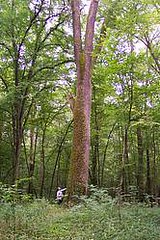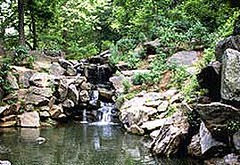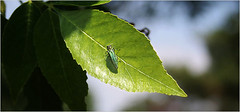This isn't an obituary of anyone you know in New York, nor is it a history lesson about Fiorello La Guardia or Boss Tweed. The New York icon I am talking about is dying a slow death right here in our midst. The victim is the Ash tree. The culprits are greenhouse gases. The slowly warming climate is eliminating the habitat for these trees that helped build New York City in it's infancy.
These trees once dominated the landscape before the Empire State and Chrysler buildings do now.
The New York Magazine had a good article on global warming and the effects on New York. It goes into more than just the decline of the Ash (El Nino, Hurricanes, etc) so please read more here. Some excerpts concerning the Ash tree below:
....its time is about to come to an end. In recent years, foresters have quietly decided not to plant any new ash trees. Why? Because the city is becoming too warm and dry for them, and they’re dying off. Green and white ash, our local varieties, are classified as "hardiness zone three or four," northern trees that prefer moist, well-drained soil. New York used to be like that, 200 years ago—but the temperature in the past century has risen over two degrees, and it’s getting drier every year. "Last year we had stretches without rain that were practically six weeks long," says Neil Calvanese, vice-president of operations for the Central Park Conservancy, which maintains the park. And the warmer weather has introduced new wood-eating bugs that afflict the tree. Normally an ash will live 250 years, but this summer Calvanese had to chop down a majestic 130-footer when it stopped thriving. "Ash in the park," he says, "I really don’t see as having much of a future."
So he’s decided to let the ash slowly die off. An urban forester has to think decades into the future, and the city’s only going to get hotter and hotter. Instead of the ash, city foresters are starting to plant trees like the persimmon, which thrives in southern climates like Washington’s or even Atlanta’s. Because that’s what the future of New York looks like, weather-wise: There will be fewer and fewer wooden baseball bats and church pews—but plenty of reddish-purple persimmon fruit.
One of the only places to see these trees in the city reminiscent of the old days is up by the Ravine in the North Woods section of Central Park. A few places in the park offer complete isolation from the constantly humming city and this place is one of them.
The warming climate has enabled the Emerald Ash Borer to survive in what were harsher environs. Those wood-eating bugs mentioned in the article aren't only a problem in the city but in many other states as well. The little guy seen below has killed 20 million Ash trees in the midwest as well.

The emerald ash borer's small size and concealed destruction make it more difficult to identify than another exotic pest, the Asian longhorned beetle, which destroys several types of hardwood trees and set off panic when it was found in the Chicago area in recent years.
Today didn't feel like Global Warming was much of a problem. An 18 degree wind chill this morning felt quite bitter to this SoCal native. Though all we have to do is take a step back and see that the big picture shows how much the climate is changing and doing so more and more quickly as time goes on.











|